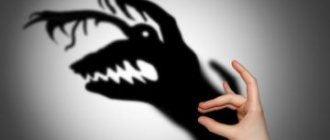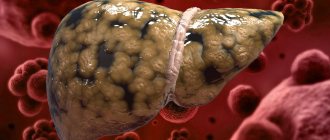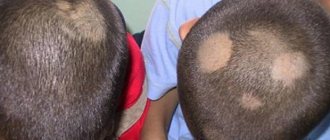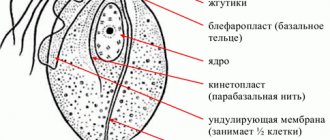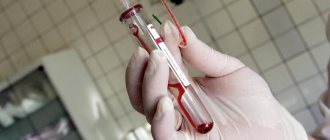Celebrities such as Salvador Dali, Vincent van Gogh, Winston Churchill and even Ludwig van Beethoven suffered from this disease. How many modern celebrities suffer from it?
When talking about depression, many psychologists call it an “ emotional cold .” The fact is that this disease is very common.
Under no circumstances is it recommended to become depressed. Severe depression can be effectively treated with medication, and many methods that can be used at home can help eliminate moderate or mild depression.
With depression, the desire to have sex may disappear and concentration may decrease.
In such cases, the patient needs treatment, which consists of psychotherapy and drug therapy.
History and modernity
Depression is as old as the human race. Research by anthropologists has found that some members of primitive communal tribes had various mental disorders, including depression. More than 6 thousand years ago, ancient Egyptian priests treated patients with a pathological state of apathy and melancholy. Depressive episodes are also described in the Bible. Mention of this mental disorder and a description of options for getting rid of the disease are present in the works of Seneca, Pythagoras of Samos, and Democritus. Hippocrates paid close attention to the treatment of melancholy as a disease (in addition to the first meaning - a type of temperament). They described symptoms characteristic of depression, including decreased appetite, insomnia, sad mood, and irritability. It was Hippocrates who first pointed out that the cause of the disease is hidden in the brain. He also took steps to classify different types of depression, suggesting that there is a disorder caused by external events, and there is an illness that occurs without any real causes. Modern psychiatrists call these conditions “psychogenic” and endogenous depression. Plato was the first to describe not only the manifestations of depression, but also the state of mania. It can be argued that thanks to the contradictions in the beliefs of Hippocrates and the theories of Plato and Socrates, modern means and methods of treating depression appeared: antidepressants and psychotherapeutic techniques.
Prevalence of depression in modern times
Today, depression as a mental disorder is one of the most common illnesses in the world. According to statistics, 151 million people are simultaneously experiencing depression, and about 98 million people are in a severe stage of the disorder. According to WHO research, about 6% of the world's population suffers from depression (as of 1999, this figure was 340 million people). At the same time, the risk of developing the disease (mainly a major depressive episode) is 15-20%. According to data, about 25% of women and almost 12% of men have experienced depression at least once, which would require treatment.
So in modern Sweden, depression is the first most common reason for taking out sick leave, and in the USA it is the second. Over 25% of people who consulted general practitioners had depressive disorders. At the same time, studies claim that about 50% of those with depressive disorder do not seek help from specialists at all, and of those who do, only 25% visit a psychiatrist.
WHO equates depression to a large-scale epidemic affecting the entire human population. This disease has already become a world “leader” among the main causes of absence from duty and has taken second place as a factor leading to disability. Thus, unipolar depression has become the leading cause of disability in the United States in the age group over 5 years.
More recently, the peak incidence rate occurred among representatives of the “middle” generation aged 30 to 40 years. Today, this mental disorder has become significantly “younger” and is often recorded in a group of people under 25 years of age.
The main threat of depression is that someone with the disease is 35 times more likely to attempt suicide than someone without the disorder. According to WHO, 50% of people suffering from endogenous depression and 20% of patients with psychogenic depression attempt to commit suicide. About 60% of all completed suicides on the planet are committed by people suffering from depression.
Development forecast
Statistics show that depression affects the quality and length of life. One of the first manifestations of Parkinson's disease is depression.
A timely visit to a doctor will help cope with a serious mental condition, but even in developed countries, less than half of patients seek help on their own. In the countries of the former Soviet Union, people rarely turn to a psychiatrist, so statistics on the number of people suffering and not receiving help are absent or unreliable.
Without treatment, depression shortens life and leads to serious consequences. Properly prescribed drug therapy in combination with psychological help can lead to remission even in severe cases.
What is depression?
Depression is a mental disorder characterized by the depressive triad:
- External lack of will;
- Motor retardation;
- Slowing down the speed of thinking.
This state of mind is experienced by the individual as an irresistible, oppressive sadness with intense irrational anxiety. A patient with depression has a decreased mood and has lost the ability to experience joy and receive pleasure (anhedonia). The patient's thinking is impaired: exclusively negative judgments appear, a pessimistic view of what is happening, confidence in the futility of the future, self-esteem decreases, and interest in everyday activities is lost.
Meaning of being depressed
Being depressed doesn't just mean being in a sad mood for a long time. Heralds of this disorder are also:
- Feeling of rapid fatigue, tiredness from usual activities;
- Lack of desire to do daily work;
- Feeling bored, loss of interest in previous hobbies;
- Lack of self-confidence, decreased self-esteem, the appearance or strengthening of inferiority complexes;
- Irritability, aggressiveness, rage.
What are the ten characteristics of depression? Depression:
- Is common;
- Often “masked” under the guise of various somatic diseases;
- Easy to diagnose if you look for it;
- Often occurs in severe form;
- Having taken a chronic course, it often worsens;
- Causes significant financial costs;
- Makes changes to the patient's lifestyle;
- Fundamentally changes the preferences, principles, values, views of the individual;
- “Forces” to stop and reconsider your views on life;
- It responds well to treatment.
Types of depression
According to some reports, depression is classified into 4 types:
- severe depression is the most serious form of the disease, characterized by the peak of an emotional crisis. Typically, this type of disorder lasts more than two weeks;
- moderate depression ( dysthymia ) is characterized by milder manifestations;
- bipolar disorder is characterized by extreme manifestations (manic depression);
- postpartum depression , which occurs in women after childbirth.
Almost every person on our planet has experienced mild depression at least once in their life.
The situation becomes more complicated if the depressive disorder lasts more than two weeks and/or is accompanied by changes in behavior (sleep disturbances, excessive eating or abstinence from food).
"Perspective" on depression
Depression is classified as a disease that has a relatively favorable prognosis. In the vast majority of recorded cases, treatment for depression leads to complete recovery. Even with frequent exacerbations and a long course of the disease, depression does not cause significant and irreversible personality changes and does not lead to mental defects. According to WHO, 50% of patients with major depressive disorder are in a state of absence of any manifestations of the disease after 6 months. At the same time, 12% of clinic patients fail to achieve remission after 5 years, and some patients are predicted to have a particularly unfavorable outcome. This supports the theory that the rate of recurrence of major depression is variable and that it is necessary to select an individualized maintenance therapy program for each patient.
Although most people with depression are unable to work, with treatment and no further exacerbations, the ability to work is restored in 90% of patients. In the case of a prolonged course, depression is equated to chronic mental illness with the diagnosis of disability for the patient.
Awareness of the likelihood of the chronic nature of depressive disorders and the high number of patients prompted the creation of special programs for monitoring and managing patients with mood disorders. These steps significantly improved the treatability of the disorder and facilitated timely treatment intervention.
Everyday understanding of depression
The perception of depression as an ordinary disease also extends to cases where the symptoms are quite serious from a medical point of view.
Due to various prejudices and fears, relatives do not know how to help the patient get out of depression. They are afraid to send a person to a hospital for treatment, but at home they cannot give him the necessary treatment. Reluctance to acknowledge the reality of mental illness is the most serious misconception. Many consider this “stupidity” and advise the patient to “pull himself together.” However, in such a situation, the patient may rather commit suicide.
Another misconception relates to the inpatient psychiatric department: the hospital is identified with a prison, and treatment activities with executions. It is difficult to call the environment in a hospital good, but treatment in a hospital is a necessity. It is worth recalling that to the patient the ordinary world seems like a prison and a torture chamber. For this reason, he will hardly notice the changes, unlike us.
The third misconception is taking medication. Many people believe that special medications are harmful to the brain and make a person dependent on them. This doesn't just apply to antidepressants. The same attitude applies to simple antibiotics, which are often necessary to save the lives of patients.
Medicines in modern psychiatry are not omnipotent, but their effectiveness is quite high. Patients tolerate the current generation of antidepressants more easily and practically do not get used to them. This becomes a real gift for someone suffering from depression.
Symptoms of depression
In most cases, a person can recognize the symptoms of depression on their own. But those close to you also notice changes in the character and behavior of their spouse, friend, colleague.
How does depression manifest itself?
Here is a generalized portrait of a person with depression.
Most often the patient is a woman. His age is from 20 to 40 years. The person probably lost one or both parents in childhood. He is divorced and does not have a permanent partner. A woman recently experienced childbirth and is raising a child without a husband. Close relatives of the patient have or have had mental disorders associated with mood swings. During life there were causeless depressive symptoms, suicidal thoughts or actions. The patient recently suffered the death of his spouse. There are or have been significant negative events in his life (reactive depression). The individual abuses psychoactive substances: alcohol, drugs, painkillers. He takes hormonal drugs, barbiturate sleeping pills or reserpine for a long time, unreasonably and uncontrollably.
As a rule, a person with depression leads a secluded, solitary lifestyle. He has few friends and a minimal social circle; no one visits him or invites him to visit. No one cares about him or pays attention to him. The person has recently suffered serious interpersonal problems: quarrels with relatives or friends. He has a low level of education. He has no hobbies or hobbies. He is an unbeliever.
How to recognize depression?
For a psychotherapist, understanding the symptoms of depression occurs on the basis of diagnosing his condition: observing the patient, analyzing complaints, the characteristics of the course of the disorder and his life history. In addition, to make a diagnosis, doctors take into account accurate and reliable information obtained using so-called scales for determining the presence and severity of depression.
These diagnostic scales are conventionally divided into two types:
- methods that allow a person to determine his condition (provide subjective data);
- scales filled out by an expert doctor (give an objective assessment).
Attention! Whatever “authoritative” and “convincing” indicators obtained through self-examination using scales or psychological tests are just an addition to the extremely important, mandatory basic medical examination and conclusions of specialists. Therefore, diagnosing yourself only on the basis of self-testing can only harm individuals, especially those with increased sensitivity and vulnerability. Anyone who suspects and has experienced symptoms of depression should contact a qualified professional.
Main symptoms of depression:
- An obvious decrease in mood, in comparison with the normal human norm.
- A distinct decrease in interests.
- Noticeable decrease in energy.
- Increased fatigue.
According to the recommendations of the Mental Health Research Institute, general symptoms of depression are divided into two groups: emotional and physical.
Emotional symptoms
- Predominant sad pessimistic mood;
- Decreased ability to think, difficulty concentrating, difficulty remembering, difficulty making decisions;
- Feelings of excessive guilt and worthlessness;
- Feeling hopeless and hopeless;
- Loss or noticeable decline in interests;
- Loss of pleasure from favorite activities and hobbies;
- Lack or decreased sexual desire;
- Pathological feeling of fear (detailed information about fears and phobias);
Main physical symptoms
- Unreasonable feelings of exhaustion and tiredness, a feeling of lack of vital energy (asthenic depression);
- Sleep disorders: insomnia, night “nightmares”, disturbing shallow sleep, early awakening, excessive sleepiness during the day;
- Psychomotor retardation or anxious agitation and irritability;
- Changes in body weight: loss or gain as a result of overeating or loss of appetite;
- Persistent somatic manifestations that are not amenable to drug treatment (for example, headache, digestive tract disorders).
Symptoms of suicidal behavior are included in a separate group.
Depression during menopause
Menopause is an important stage in the life of every woman.
During this period, fundamental hormonal and biological changes occur in the body, accompanied by changes in the field of health, psychology, and society. Estrogen levels decrease. This process is accompanied not only by objective, but also by subjective manifestations. This period can begin and proceed individually. Some women are relatively calm and moderate. For others it is much more dramatic.
Menopause is the most common period when women develop depression.
This is logical and understandable. A woman's life changes. Many begin to experience fear of aging, to feel that “their train is leaving.” They become more aware of their age, balance values and priorities. Dramatic and negative changes often occur in the female psyche, and a feeling of loneliness appears. An inharmonious family environment, lack of support and understanding from the family and husband play an important role. This is a period when children tend to leave their families and the role of women and mothers shifts to a more passive position. Conditions and daily life change. Anxiety and responsibility decrease, but a change in status also occurs.
The main causes of depression!
Research conducted by experts from the University of Kansas, examining the causes of depression in over 2,500 patients in US psychiatric clinics, identified the main risk factors for the development of depression. These include:
- Age from 20 to 40 years;
- Change in social status;
- Divorce, break in relationship with a loved one;
- Presence of acts of suicide in previous generations;
- Loss of close relatives under the age of 11;
- The predominance in personal qualities of traits of anxiety, diligence, responsibility, diligence;
- Long-term stress factors;
- Homosexual orientation;
- Problems in the sexual sphere;
- The period after childbirth, especially for single mothers.
Why does depression occur?
To date, there is no unified theory or understanding of why depression occurs. More than ten theories and scientific background studies try to explain the causes of this painful condition. All existing theories and paradigms can be divided into two groups: biological and socio-psychological.
Of the biological theories, the most proven today is genetic predisposition. The essence of the teaching is that somewhere in the patient’s family there was a failure at the genetic level, which is inherited. This “false” predisposition (but not doom!) is inherited and may more likely manifest itself under a certain set of life circumstances (stress factors, prolonged exposure to conflict, chronic illnesses, alcoholism, etc.).
The second, more studied side of this disease is to understand the functioning of the brain and study the mechanisms and chemicals that provide enough or insufficiently provide this work during the disease. All drug therapy (mainly treatment with medications - antidepressants) is based on this theory and understanding of the disease, as the most proven and promising.
Another group of theories of understanding the disease belongs to the so-called psychological or socio-psychological. Here, the explanation of the onset and course of the disease is based on the study of the patient’s communication problems, the characteristics of his personality, the psychological problems of his growing up, life in the present, and the level of stress. Psychotherapy is based on these theories (non-drug treatment through exposure to words, informing the patient).
Theories created by psychotherapists see the causes of depression in “wrong” thinking and/or behavior, the basic model of which is laid down in childhood. Theoretical developments of sociologists explain the causes of depression in the existence of contradictions between the individual and society.
Thus, it can be argued that any person’s well-being, his experiences, including painful depression, have two bases:
- physiological (depending in part on the presence of certain chemicals in the brain);
- psychological (partially depends on events occurring in life).
Physiological causes of depression
- imbalance of brain chemicals (neurotransmitters);
- taking certain medications (for example: steroids, narcotic painkillers). It is worth noting that after discontinuation of treatment with these drugs, the symptoms of the disorder disappear;
- problems in the functioning of the endocrine system (for example: hormonal imbalance due to dysfunction of the thyroid gland and adrenal gland);
- imbalance of certain chemical elements (for example: imbalance of iron and calcium in the blood);
- infectious diseases (for example: a viral infection that affects the brain);
- some long-term chronic diseases (for example: arthritis, cancer, some heart diseases).
Psychological causes of depression
- Some personal characteristics of a person (accentuated traits);
- Exposure to social stressors (for example: death of a loved one);
- Exposure to chronic stressors (for example: living below the poverty line, personal problems in the family, having a serious illness);
- Forced stay in critical, life-threatening situations (for example: in a war zone);
- A sudden situation in adults who are accustomed to acting independently when they need outside help (for example: disability after an accident);
- Childhood and adolescence in individuals experiencing parental or peer pressure (adolescent depression);
- Abuse of narcotic and toxic substances, alcohol;
- Being in special conditions (for example: menopause, chronic pain);
- Birth of a child.
According to experts from Northwestern University in the USA, social cultural values influence the tendency to depression. Studies have shown that the highest percentage of cases of depression occurs in cultures where the individuality of the individual is placed higher than the harmony in the team. This explains the “hotspot” of depression in individualistic cultures such as European and American ones.
Prevention of depression
Get the right amount of sleep
Studies have shown that people who sleep less than 8 hours a day every night have lower serotonin levels compared to those who sleep more than 8 hours.
To improve your sleep quality, try to go to bed and wake up at the same time every day (even on weekends).
Turn off the TV
It has been noted that prolonged exposure to a TV screen negatively affects a person’s mental state.
Watching series , various television programs, and movies for a long time may seem like a good way to relieve stress. But as practice shows, such people are more isolated, so they suffer more often from depression.
Share link:
Treatment of depression
The main goal of treating depression is to achieve a stable state in which the individual does not have a depressed mood, there are no thoughts about the futility of the future, normal performance and vitality are restored, and the quality of life improves.
In psychiatry, separate conditions are distinguished in the course of depression and its treatment. These include:
- Remission is the absence of depressive symptoms for an extended period of time after an episode of depression.
- Recovery is the complete absence of symptoms of depression for a certain period of time (on average 4 to 6 months).
- Exacerbation is the resumption of symptoms of a depressive disorder.
- Relapse is a new depressive episode after recovery.
Depending on the severity of the disease, the most optimal treatment regimen is selected individually for each patient. As a rule, for severe and moderate forms of depression, medications are first prescribed - antidepressants and other methods of biological influence are used. For mild forms of depression, the primary measures are psychotherapy methods; drug treatment is used as an adjunct.
To date, various methods of treating depression have been developed. In the arsenal of psychiatrists and psychotherapists:
- Drug therapy (treatment with drugs)
- Insulin therapy
- Electroconvulsive therapy (ECT)
- Transcranial magnetic stimulation (TMS)
- Vagus nerve stimulation (VNS)
- Sleep deprivation
- Light therapy (phototherapy)
- Rebirthing
Psychotherapeutic methods are widely used:
- cognitive behavioral therapy,
- rational (read more about the method “Rational Therapy”),
- suggestive,
- psychoanalysis,
- gestalt therapy,
- neurolinguistic programming,
- art therapy,
- meditation,
- positive psychotherapy,
- autogenic training.
As an additional measure, people suffering from depression are prescribed a special diet - a diet (read more in the article “Diet for Depression”). Physical exercise and running show good results in a program for reducing symptoms of depression in any form of illness.
When treating mild depression, you can follow the recommendations of traditional medicine. However, according to most experts, treatment with folk remedies can complement the above methods, but cannot replace them (read the article “Folk remedies for the treatment of depression”).
How to evaluate the effectiveness of treatment?
It should be understood that depression, as a rule, disappears under the influence of therapy in the same way as it appeared - symptom by symptom. Situations are rarely observed when all manifestations of the disease disappear all together and quickly. For example: first, sleep begins to recover, pleasure from sleep appears, then the mood gradually improves, after which the third symptom disappears - the person begins to show interest in the events happening around him. With depression, everything happens gradually. Therefore, you should pay attention specifically to individual manifestations of recovery and disappearance of symptoms. They will indicate the likely effectiveness of the chosen treatment method or prescribed drug and the need to continue this particular therapy.
The main characteristic features of the effectiveness of the treatment:
- Improved mood : visible to others and expressed by the patient.
- Improvement of vital functions : increased energy, emergence of interests, desire to engage in some activity, restoration of appetite. Moreover, not only the process of activity itself, but also the expressed desire is a good sign.
- Reduced anxiety level : decreased anxiety, disappearance of unpleasant apprehensions and panic, feelings of constriction in the chest area and a feeling of lack of air, decreased tachycardia and internal trembling.
- Improvement of somatic condition : disappearance of insomnia, restoration of sleep quality, improvement of digestive tract functions, restoration of sexual desire.
- Improving cognitive functions : increasing the speed of thinking, improving memory and concentration, increasing performance. A person begins to watch television programs, read magazines, and comment on them.
- Improvement of motor functions : the speed of movements increases to the level that was before the disease, motor activity and “liveness” of movements increase. The gait becomes more active, slow “shuffling”, stopping, prolonged aimless lying or sitting disappear.
Effective antidepressant treatment of depression allows for the formation of high compliance. In other words, the patient begins to more actively follow the doctor’s recommendations regarding adherence to the daily routine, medical procedures, taking medications, etc.
Physiological and pathological depression
To understand the question of why depression occurs, you should know that the disorder can be physiological and pathological.
Physiological depression has an explanation. Actually, we are talking about the state of sadness. The reasons for such depression are varied and numerous: a hard day at work, domestic conflicts, bad weather, etc.
A more serious condition is pathological depression. In this case, a person experiences very strong negative emotions that interfere with his social and biological life.
Symptoms of depression fall into 3 main groups.
The first group consists of mental signs, such as:
- gloomy mood;
- slow thinking;
- pessimism;
- despondency;
- suicidal thoughts;
- feelings of inferiority;
- feeling of loneliness;
- inner emptiness;
- hopelessness.
The second group includes psychomotor symptoms, such as:
- fear;
- anxiety;
- fatigue;
- slow motion.
The third group is represented by somatic signs, such as:
- insomnia;
- physical discomfort;
- indigestion;
- diarrhea or constipation;
- many other bodily symptoms.
With pathological depression, these manifestations are aggravated. It's not just about sadness. A person suffering from a pathological form of the disorder may have recurrent depressive periods of varying duration. Between these periods there is some improvement. This type of depression does not change depending on the situation. It is impossible to cheer such a person up.
Test for depression - determine the level according to the E. Beck scale
The most popular test for depression is determining the level of psychological disturbances using the Beck scale. The test itself contains 21 questions describing your attitude to different life situations. By taking the test, you will find out what form of depression you have.
Main forms of depression:
- there is no depression;
- light form;
- medium shape;
- severe form of depression.
We invite you to take E. Beck’s test yourself to determine the form of your depression or its absence and familiarize yourself with the results.
Fighting depression
Treatment of depressive disorder consists of influencing the etiological factor (cause) and taking measures to prevent its further influence. For example, treatment of seasonal depression is carried out through the use of light therapy and walks in the fresh air in clear sunny weather. Treatment for iatrogenic depression involves stopping the drug that is causing the symptoms.
The treatment approach is determined by the type of disorder:
| Psychogenic depression | Somatogenic depression | Endogenous depression |
| Combination of psychotherapy and pharmacotherapy | Treatment of somatic pathology, and subsequently - symptomatic pharmacotherapy and psychotherapy | Psychopharmacotherapy |
Specialists treat the disease at different levels:
- pharmacologist - biochemical through the use of drugs;
- psychologist and psychotherapist - on cognitive and behavioral by selecting effective methods against depression.
Interesting fact! Professor Paul Kidwell, from Cardiff University, argues that antidepressant drugs will have no effect in the fight against depression unless a person tries to change their lifestyle.
Both drug therapy and alternative medicine help to get out of depression. These include herbal therapy, hypnosis, meditation, the use of music and massage for depression.
Drug therapy
The main medications for depression include antidepressants, which are usually available in tablets. Antidepressants are divided into stimulant and sedative drugs.
| Stimulating effect | Sedative effect |
| Indicated for use in apathetic depression, which is accompanied by lethargy, apathy and increased melancholy (Fluoxetine, Imipramine, Venlafaxine) | Indicated for use in agitated depression, which is accompanied by restless behavior and increased irritability (Amitriptyline, Paroxetine, Sertraline) |
It is important to note that the required amount of treatment is prescribed directly by the attending physician. Some patients resort to anxiolytics, nootropics and other drugs whose action is directed against anxiety and increased stress. This is due to their availability. Drugs such as Afobazole and Tenoten are available without a prescription, but other groups of drugs with more serious effects require a prescription from a psychiatrist.
Let's compare the effects of these drugs
| Fluoxetine | Afobazole | Tenoten | Phenibut |
| An antidepressant whose mechanism of action is the inhibition of serotonin reuptake. Indicated for use in depressive disorder, obsessive-compulsive disorder and depressive episodes. | Anxiolytic used for anxiety disorders, somatoform dysfunction and neurotic conditions. Effective in the complex treatment of prolonged depression. | Anxiolytic indicated for use in anxiety disorders, increased nervousness and severe stress. Can be used for mild depression, which is accompanied by emotional instability and anxiety disorder. | Nootropic. Used for anxiety and neurotic disorders. |
Patient reviews of medications prescribed for severe depression indicate that their long-term use causes the development of side effects. These include:
- sleep disorders;
- decreased libido;
- weight gain;
- bowel disorders (constipation);
- tremor of the extremities.
Fluoxetine. Photo: pharmaconom.ru
Herbal preparations
Herbal medicines are effective in treating neurotic disorders and also depression. St. John's wort is an herb that is effective against symptoms arising from neurotic disorders and depression.
Herbal medicine tablets for depression can be purchased at pharmacies without prescriptions or certificates. They are easier to tolerate, but it is worth taking into account that interactions with some antidepressants and medications can be dangerous.
Lifestyle
It is also necessary to pay attention to the patient’s lifestyle and adhere to the following principles:
- nutrition for depression should be balanced and rational;
- add foods to your diet that increase serotonin levels and mood - bananas and chocolate are effective against depression;
- there should be daily walks in the fresh air;
- dosed physical activity (morning exercises, yoga).
Photo: donnamoderna.com
Poor people
“Depression” is a relatively new term, it appeared only in the 19th century. However, the disease itself has existed for more than the first millennium. It is mentioned in ancient texts from Mesopotamia, Babylon, Egypt and China. In those days, the cause of depression (as well as other mental disorders) was considered to be human possession by demons. The treatment, accordingly, was exorcism sessions: the patients were beaten, tied up, and starved.
In Ancient Greece during the time of Hippocrates, healers, following the legendary doctor himself, were sure that melancholy (as depression was previously called) was caused by an excess of “black bile” - one of the main body fluids. To treat this condition, Hippocrates recommended the use of bloodletting, baths, exercise and diet.
The next important step forward was taken during the time of Plato: philosophers of that time came to the conclusion that the cause of mental illness could be childhood experiences and problems in the family. However, it was not possible to advance further than this idea in those days - after another half a millennium, the dark ages came, which did not promise anything good for the mentally ill.
St. Augustine, who lived at the very beginning of the Dark Ages, stated that despondency and depression are punishment for sins, and the symptoms of severe clinical depression are signs of demonic possession (yes, again). They were treated for “demons” in much the same way as in ancient times - with the help of punishments with which patients were supposed to atone for their sins. But the gradual decrease in the influence of the church by the 17th–18th centuries did not bring anything good to patients with depression: the era of reason and rationalism explained the disease “progressively” - as a lack of self-discipline and indulgence in laziness. However, this does not mean at all that medicine condoned “laziness” - depression was treated with torture, designed to distract patients from their harmful lack of composure.
By the middle of the 19th century, a fashion for hysteria began in Europe - it was explained by many diseases in women, from depression to sexual dysfunction. The popularity of hysteria has led to the emergence of a huge number of different methods of treating it - from hypnosis and water procedures to quite medieval practices such as burning the skin with acid to distract the patient from the disease. In the 20th century, depression began to increasingly appear as a separate diagnosis in medical practice, but even today the attitude towards it is ambivalent - the myth that it is not a disease at all, but a lack of motivation, connivance and laziness, is still alive.
Treatment with vitamins
Symptoms of depression are caused by a deficiency of serotonin, which dulls pain sensitivity, normalizes blood pressure, appetite, and controls the synthesis of growth hormone.
The body produces serotonin from the essential amino acid tryptophan, a mood regulator. A lack of tryptophan reduces the production of serotonin.
Thiamine (vitamin B1) prevents depression, insomnia, and chronic fatigue. It contains wholemeal flour, potatoes, legumes, and cabbage.
Nicotinic acid (vitamin B3) creates the conditions for the conversion of tryptophan into serotonin. Otherwise, the body uses tryptophan to synthesize vitamin B3.
The cause of depression is a deficiency of vitamin B12; liver, meat, dairy products, and eggs are rich in it.
Tryptophan requires the supply of pyridoxine (vitamin B6). Therefore, symptoms of depression are prevented by eating nuts, potatoes, cabbage, tomatoes, oranges, lemons, cherries, fish, eggs, and legumes.
The action of pyridoxine in women blocks the hormone estrogen, which increases metabolic reactions with tryptophan, causing a lack of the latter for the production of serotonin.
Estrogen levels are increased by birth control pills, pregnancy, and the critical period.
Treatment
Treatment of clinical depression involves intervention in fundamental mental processes, correction of self-esteem and behavior. This important process should only be entrusted to a professional. A competent psychologist or psychotherapist always uses an individual approach in counseling each patient.
How is treatment carried out step by step?
- relieve physical symptoms, normalize sleep, appetite;
- find a starting point for developing healthy self-esteem;
- adjust the patient’s attitude towards himself;
- learn to build constructive relationships with other people;
- improve performance and motivation in the professional field;
- promote the creative, personal and professional development of the patient until he can cope with it independently.
The psyche, freed from clinical depression, receives a great resource that can be used for a long, happy and rich future life. The patient does not need therapeutic assistance for life, but only until successful autonomous functioning is achieved.
What is meant by clinical depression? We are talking about a complex mental illness, a serious mental disorder, which is characterized by a number of clinical symptoms: thoughts of suicide, a depressed state, and a complete loss of interest in life events.
There are other names for the disease. The first sounds like “unipolar depression”, the second sounds like “major depressive disorder”.
Clinical depression affects both the psyche and the body. That's why it's so dangerous. As a rule, the disease progresses for a long time and is sluggish. And in any case, it requires professional treatment.
There are four types of clinical depression:
- Premenstrual is part of a symptomatic complex that often occurs before the menstrual period. Depressive disorder makes itself felt a week before menstruation and goes away a day or two after its onset.
- Postpartum is a type associated with changes in hormonal levels in the female body, characterized by deterioration of appetite, depression, and sleep disturbances. In rare cases, what happens to young mothers is not depression, but postpartum psychosis: when a woman suffers from hallucinations, bouts of delirium and needs hospital treatment.
- Psychotic is a dangerous form of the disease, accompanied by fears, obsessions, “voice” hallucinations and fear of death. Most often, men are susceptible to this mental disorder.
- Clinical anxiety is a complex phobic disorder characterized by psychomotor agitation.
Each type of mental disorder is treated differently.
Regular and clinical depression: what's the difference?
If we talk about clinical depression, we mean both mental and physical suffering. The disease is characterized by the presence of waves of different sequences: for a while the patient feels better, after a while the waves of depressed mood come again. Similar ebbs and flows can be observed both throughout the day and at longer intervals.
An interesting point: a person who has become a victim of clinical depression does not receive pleasure at all from current events, from communicating with people, or from life in general.
If an ordinary mental disorder is accompanied by a stable melancholy mood over a certain period, then in the clinical form there is a rapid deterioration in the patient’s condition. At first, a person simply gives up the usual things: communication with family, enjoying food, hobbies, and so on. Later, he locks himself in his room and immerses himself in negative thoughts.
Why is clinical depression so dangerous?
When a patient is in a complex depressed state, he can lose not only his job, but also his health and family. Often, the difficulties that caused the illness lead to suicide. Only timely diagnosis can reduce the risk of suicide.
The prognosis of the disease is as follows: approximately two to three months after the start of treatment, the patient’s condition stabilizes and symptoms decrease. A relapse of a mental disorder is possible if all symptoms of the disease are not eliminated in a timely manner.
Therefore, it is extremely important to diagnose major depressive disorder early and identify all its symptoms. The patient can be returned to normal life only with the help of psychotherapy and/or medication.
Causes and factors of depressive disorder
Clinical depression is completely indiscriminate in its victims. Who is at risk? An adult, child or teenager can become hostage to this disease. Most often, the disease occurs in people over 25 years of age. Women are more susceptible to pathology than men. This is due to the fact that the fair sex depends on hormonal surges, moreover, men prefer not to pay attention to obvious symptoms.
Scientists claim that the depressive disorder in question is observed in those who have a genetic predisposition and who already suffer from mental pathologies.
However, there are other factors that can cause this disease:
- Diseases. The condition of the nervous system can deteriorate due to the effects of Alzheimer's disease, heart and vascular diseases, diabetes, Parkinson's disease, and oncology.
- Disruption of the endocrine system. When the level of neurotransmitters decreases, a person loses the ability to feel positivity. Hormonal disorders occur in women during pregnancy, menopause, and in people with severe somatic disorders.
- Difficult and traumatic situations. When a person is faced with a life problem (death, divorce, layoff, bankruptcy, moving), he may become despondent.
- The reasons are cognitive. They are found in people who place high demands on themselves and others, and in people with low self-esteem. The bottom line is a mistaken perception.
- Social factors. Many people are not satisfied with their financial situation. Major depressive disorder can also be triggered by seemingly ordinary everyday problems that cause people to become irritable and apathetic.
- Medicines. Certain medications can actually cause clinical depression. Therefore, you need to be careful when studying the instructions for the drugs.
Note! There is no single factor that leads to the development of a mental disorder. Most often, the disease develops due to the influence of several causes, biological and mental.
As practice shows, residents of megacities more often suffer from stress, migraines and all kinds of traumatic situations. They are more susceptible to major depression than others.
Symptoms of major depressive disorder
Signs of the disease in question arise due to interruptions in the transmission of neural impulses. The more severe the patient’s condition, the more pronounced they are.
It is easy to detect clinical depression based on the following symptoms:
- Suddenly depressed. The patient feels helpless, unnecessary, becomes timid and fearful. His self-esteem noticeably decreases.
- The person loses interest in life. He ceases to be drawn to his favorite pastimes and hobbies. Seriously ill patients note that they have no feelings.
- Feeling worse. The patient develops insomnia, loss of appetite, decreased performance, slowed down thinking, frequent headaches, and weakness.
- Human behavior changes. The patient may become angry at a simple situation, may burst into tears for no apparent reason, refuse any communication - become inadequate and withdrawn.
Other signs of clinical depression include lack of energy, chronic fatigue, psychomotor impairment, and thoughts of suicide. 3-5 signs from those listed above are enough to make a diagnosis.
Major depression: features of diagnosis and treatment
Are you wondering which doctor you should see if you have obvious symptoms of major depression? A neurologist, psychiatrist, or psychotherapist can help with diagnosing the disease. Only an experienced specialist will find the true cause of the problem and prescribe the correct treatment.
Major depressive disorder can be diagnosed using tests. We are talking about the Beck and Zang tests. Plus, it is important to undergo a comprehensive examination. Using MRI of the head and Doppler ultrasound of blood vessels, it is important to exclude the presence of infection or neoplasms.
Treatment of the disease must be carried out under the supervision of a doctor. Independent attempts to get rid of the disease can cause deterioration in health.
So, for effective healing from major depression you need to:
- Take a course of psychotherapy.
- Take special medications.
Psychotherapy is considered an important treatment for mental illness. With the help of an experienced specialist, it is easier for the patient to cope with the disease and prevent its recurrence. The main psychotherapeutic techniques include hypnosis, psychoanalysis, behavioral therapy and humanistic therapy.
Among the most effective medications are antidepressants (aimed at increasing neurotransmitters in the brain), mood stabilizers (normalize the functioning of the central nervous system), antipsychotics (used in the presence of aggression, delirium, hallucinations), tranquilizers (relieve anxiety, fear, insomnia).
Is it possible to cure depression only with the help of psychotherapy, without medications? Quite if we are talking about a mild form of the disease.
There are also additional means that promote quick and effective healing. Among them are massage, light therapy, exercise therapy, transcranial magnetic stimulation, and electroconvulsive therapy.
The use of folk remedies in the form of herbal decoctions and teas is recommended as an excellent addition to the main treatment of depressive disorder.
In some cases, even surgery or electrical stimulation of areas of the brain is performed.
An integrated approach is the key to achieving the desired result.
As an excellent addition to treatment, doctors advise a change of environment, a course of soothing massage, more communication with friends and family, spending time in the fresh air, in the sun, on the seaside.
Clinical depression: disease prevention
Do you know what the good mood hormone is called? That's right, serotonin. It is he who helps prevent the development of a mental disorder. The obvious question is: how can it be increased to the required level? B vitamins, magnesium, calcium, omega-3 are the best friends of healthy and happy people.
It is not difficult to prevent a terrible disease by following the right advice:
- Firstly, you need to lead a healthy lifestyle. It's not just about physical activity. Although sport has been and remains the first assistant in maintaining and improving health. As you know, even short exercises and a walk in the fresh air are an excellent prevention of illness. Don't forget about good nutrition. It should be balanced, fractional and useful. The menu should include fresh vegetables and fruits.
- Secondly, it is important to treat existing diseases in a timely manner. Often it is chronic illnesses that are the trigger for the occurrence of a dangerous condition.
- Thirdly, it is necessary to observe a rest and work regime. Exhausting work in the evening and at night leads to stress and nervous breakdowns. Hours spent on the sofa near the TV are also not beneficial.
To improve your quality of life, it is important to get enough sleep, change activities more often, and communicate with positive people. We can recommend watching comedies, reading good books, visiting entertainment centers. Fostering a positive outlook on life is a top priority for anyone at risk.
Don't want to follow the recommendations? Be prepared for the appearance of an uninvited “friend” - major depression. It's guaranteed to make your life difficult. Don't underestimate her.
The choice is yours: to actively fight for a fulfilling life with the help of psychotherapy and antidepressants, or to start changing your lifestyle right now!
And remember! The disease in question affects not only the quality of life, but also its duration. Without professional help, it can lead to irreparable complications.
The slightest hint of major depressive disorder is a reason to consult a medical expert. Only in this case can dangerous consequences be avoided.
0
Author of the publication
offline 5 hours
@alexfirepro
10K
Comments: 0Publications: 1091Registration: 05/18/2018
What diseases masquerade as depressive disorder?
When diagnosing clinical depression, it is necessary to exclude all diseases or conditions that indirectly lead to decreased mood. So, symptoms can be observed in all patients:
- with severe chronic pathologies, especially with an unfavorable prognosis, for example, with advanced cancer;
- with pulmonary pathologies, which are associated with impaired ventilation, brain hypoxia (tuberculosis, bronchial asthma);
- with pathologies of the thyroid gland, against the background of which there is a decreased mood, slowness of mental processes (to a greater extent this is typical for hypofunction of the gland; with correctly selected replacement therapy and the formation of a euthyroid status, the symptoms of a depressed psychological state disappear);
- survivors of a stroke, in this case, decreased mood, depressed state, suicidal thoughts are associated with organic pathology of the brain, death of its areas and impaired production of neurotransmitters;
Signs of depressive disorders are also found in the following diseases:
- Parkinson's disease;
- multiple sclerosis;
- migraine;
- diseases of the musculoskeletal system;
- diabetes;
- epilepsy;
- cardiovascular pathologies.
How do you know if you have clinical depression?
Diagnosing the disease on your own is difficult. To do this, it is necessary to identify several symptoms of the disease, which are not always assessed objectively without the help of a doctor.
Who has the right to make a diagnosis?
If your loved one or you show some of the signs of depression, you should see a doctor that day. For a complete and comprehensive approach, consultations with the following specialists are useful:
- a psychiatrist or psychoneurologist (neurologist) - only a doctor has sufficient experience and the right to make a diagnosis and prescribe medications, and the help of medications is simply necessary;
- psychotherapist - dialogues with a competent psychotherapist will help you find the cause of a depressive state, as well as learn adaptive techniques that will strengthen your psyche.
Preventive measures
To avoid attacks of depression and live in harmony with yourself, you should follow some rules:
- Light. You need to ensure that there is always good lighting at home and in the workplace.
- Proper nutrition. You need to eat a lot of vegetables and fruits.
- Sport. Working out in the gym or yoga will help restore your mental balance.
- Hobby. A favorite activity always brings pleasure and does not allow you to be sad.
- Goals and plans. Without setting goals, life becomes uninteresting.
However, the most important ways to avoid depression are healthy sleep and communication with loved ones, because every person needs the emotional support of others.
Stages of depression
What is clinical depression, and how does the patient feel about it? It is important to know the stages of development of the disease in order to contact a specialist in time. It is customary to distinguish several stages in the development of clinical depression, through which every person suffering from a mood disorder passes in one way or another.
- Stage one: denial. A person feels that his mental state is deteriorating, but refuses to pay attention to this fact. Often the environment causes the first stage to appear. Perhaps a person is ready to share his thoughts and experiences with someone, but in response he hears words of “support” such as: stop, don’t pay attention, it will pass. And he himself begins to deny that the situation is difficult.
- Stage two: resentment. The search for those to blame begins not only from those around you, but also within yourself. A person tries to understand the reasons for a serious condition, but cannot, and accuses himself of weakness and others of callousness.
- Stage three: humility. Suddenly an understanding comes: these are not just difficulties in interacting with the outside world, this is clinical depression. Treatment at this stage is also possible using methods of in-depth psychological study with elements of hypnosis, as recommended by psychologist-hypnologist Nikita Valerievich Baturin.
- Stage four: increased melancholy. The severity of the symptoms increases, but the person is no longer looking for a solution. The feeling of hopelessness and frailty of existence comes to the fore. This stage is often combined with the onset of alcohol or drug use. Addictions are a way to get rid of psychological pressure, at least for a short time.
- Stage five: the most difficult. In this state, suicides are committed against the background of clinical depression if the person did not receive help in time. Treatment usually takes place in a hospital, sometimes against the patient’s will.
Depression: definition and types
What does clinical depression mean? This term is usually understood as a unipolar severe mental disorder, accompanied by a long-term painful physical and mental state. Symptoms appear in waves, with peaks occurring in both the morning and evening hours. The highest point of fluctuation brings serious discomfort, as it is expressed in loss of strength, shortness of breath, feelings of helplessness, worthlessness and guilt. Depression is a disease of the following types:
- Clinical (psychotic). Accompanied by serious mental disorders, hallucinations and delusional states.
- Hormonal (perinatal, postpartum). Many women suffer from it during the first time after childbirth. Associated with changes in hormonal levels.
- Somatized (disguised). It is one of the forms of atypical mental disorder, when somatic symptoms mask the presence of an affective disorder.
- Alcoholic. Associated with a painful addiction to ethanol. Among people susceptible to this type of disorder, there is a high rate of suicide.
- Manic (bipolar). It is distinguished by periods of mania and panic with time intervals when recessions occur in depression.
- Dysthymia. It is a persistent mental disorder, but belongs to less severe types of depression.
Depression is a concept in psychology that affects not only adults. Disorders in various forms are diagnosed in children under 18 years of age, and are expressed in unsatisfactory academic performance, bad behavior, lack of self-confidence and lack of any interests. Hidden depression is observed in people who are in a state of struggle with internal vices and weaknesses. With melancholy, motor activity decreases, a person ceases to experience pleasure from anything.
Interesting! Atypical depression is accompanied by a feeling of heaviness in the legs and arms, as well as paralysis.
Distinctive signs of psychopathology
Major depressive disorder is characterized by groups of symptoms that can vary in severity. The pathology develops gradually, and the general assessment of the condition is characterized as sad, melancholic. It can occur at any age, regardless of social status, and is not clearly linked to gender. But according to statistics, women suffer more often than men. The main age of manifestation is 25-45 years.
Human emotions are associated with melancholy and sadness. The condition is formed against the background of low self-esteem, self-doubt and insufficient social approval. Therefore, the first episode may appear in adolescence.
According to statistics, depressive disorders are the most common mental pathologies, affecting up to 15% of the population, but the true figures are unknown, since about 60% of people with symptoms of clinical depression seek medical help. The following factors deter you from going to a psychiatrist:
- fear of a “terrible” psychiatric diagnosis;
- fear of the impact of the diagnosis on professional activities and relationships with loved ones;
- probable side effects of medications and the possibility of addiction to them;
- the false idea that emotional problems are a personal matter.
Symptoms of clinical depression develop gradually. Under the influence of external factors, prolonged stress, mood decreases, joy and pleasure from events and things that previously brought positive emotions disappear. The person loses interest in the outside world.
Reduced self-esteem leaves an imprint on thoughts and events. All of life can seem like a series of catastrophic mistakes and wrong actions. A person constantly analyzes and remembers his behavior and the reactions of others, which increases his confidence in his worthlessness and leads to feelings of guilt. The perception of what is happening is distorted, false and random conclusions appear. The following features are characteristic of mental activity:
- generalization;
- selective abstraction;
- exaggeration.
How does clinical depression differ from ordinary sadness, bad mood, deprivation?
Duration of the flow. The duration of major depressive disorder exceeds 2 weeks, while deprivation and low mood go away on their own or with a change of environment.
Mental deviation disrupts sleep patterns, insomnia occurs more often, but hypersomnia is sometimes observed. The duration of sleep increases, it is impossible to wake up in the morning, and during the daytime there is a constant desire to lie down. Insomnia can take the form of problems falling asleep or waking up at night. Sometimes I have nightmares.
As a consequence of clinical depression, mental impairment occurs. The ability to remember deteriorates, there is a feeling that it is impossible to collect thoughts, and concentration decreases. Therefore, in a depressed state, the risk of accidents increases, both at home and at work. There is a feeling of constant fatigue.
The sufferer notes changes in appetite. Most often, there is a decrease in it, up to a complete refusal of food. Body weight is significantly reduced. But a pathological craving for food may occur; stress eating leads to active weight gain.
The described signs are present most of the day, disturbances in behavior and mental state are noticeable both to the patient himself and to those around him. Symptoms persist for two weeks or longer, but even after a course of treatment during remission, residual effects in the form of asthenovegetative or somatovegetative disorder are possible. They can last for months and years.
Depression in men may differ in manifestations. Signs such as a persistent decrease in mood and anhedonia - loss of pleasure - are not necessary for him. In men, symptoms are as follows:
- decreased libido;
- sleep changes;
- loss of appetite;
- anxiety and irritability;
- alcohol or substance abuse.
Clinical depression is characterized by thoughts of suicide. About 2% of patients carry out their plans, so it is necessary to diagnose depressive disorder in a timely manner.
And why all?
If we talk about exogenous depression, then the reasons for their occurrence (at least the first-order reasons) include all sorts of traumatic events that happened to the patient, various diseases (primarily neurological, such as epilepsy and dementia, and endocrine, for example, diabetes) , traumatic brain injuries, taking certain medications, lack of sunlight, severe stress.
The situation is more complicated with endogenous, “causeless” depression. There is no clear answer to the question of what goes wrong at the moment when a person becomes depressed. But there are hypotheses about this. The leading theory today is the monoamine theory. According to it, depression begins due to a deficiency in the body of two substances - serotonin and (or) norepinephrine (they are precisely monoamines). The first of them, among other things, is responsible for the feeling of joy, the second is called the “mediator of wakefulness”; it is actively produced during stressful reactions and in situations where it is necessary to gather oneself and act.
The problem may be not only in the actual lack of these substances, but also in disturbances in their transmission from neuron to neuron. The development of Prozac and some other popular antidepressants is based precisely on this theory - their work comes down to increasing the amount of monoamines or correcting problems with their transmission. However, not everything is smooth here. Critics of the monoamine theory say that if depression depended only on serotonin levels, then antidepressants would help immediately after taking them, and not after a month of treatment, as is actually the case. In addition, research suggests that when serotonin levels decrease, not everyone develops depression. From these premises a separate “stress theory” grew. According to her, the effect of antidepressants is not due to their influence on the level of serotonin in the body, but to the stimulation of neurogenesis - the birth of new nerve cells. These processes in certain areas of the brain continue throughout life, and stress can disrupt them. A couple of weeks of taking antidepressants corrects the situation, and thus depression can be overcome. The “stress theory” today is no longer considered an explanation of the origin of depression, but as a hypothesis about the mechanism of action of some antidepressants, it is taken quite seriously.
